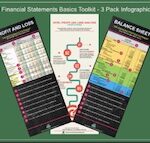Hotel Revenue Basics Beginners Struggle With
Have you ever wondered why hotel revenue is the first point of focus for all levels of managers?
And yet why most hotel managers miss the most critical elements of revenue as a Key Performance Indicator [KPI]?
In the process regretfully, they are left wondering why they did not achieve their revenue targets.
Are you a victim of this syndrome?
Often hotel managers are looking for some lofty goals of revenue management.
However, they forget the critical basics that are the foundation of effective revenue management.
I will lay out the basics of revenue achievement which no hotel manager can afford to ignore.
Grab this EXCEL Spreadsheet
Don’t miss our 5 Killer Hotel KPIs Dashboard
Get this exclusive Excel Template that you can customize to create your own 5 Killer Hotel KPIs Dashboard
It will ensure that you achieve your revenue targets consistently.
In this post pandemic era, revenue achievement is equivalent to survival of the business itself.
Are you prepared for this post pandemic era challenge?
This is Part 2 of the 6 Part Series on Hotel Profit and Loss Statement Basics Beginners Struggle with.
If you missed Part 1, click below to read that first.
This Blog Post will cover:
Some Truths about the Hotel Profit and Loss Statement
The Profit and Loss Statement is one of the critical Profit and Loss Reports that hotel managements use month after month.
It is a report that lays out the business results of the past month for the hotel.
Most articles you read on a Hotel Profit and Loss Statement will tell you that it is a statement of hotel:
- revenue,
- expenses and
- profit or net income.
Sometimes it is just hotel revenue and expenses.
In this post, I will focus on hotel revenue.
Did you know that there is something more important and comes even before hotel revenue itself?
It is one of the basics of revenue that most hotel managers miss at their own peril.
So what is that you ask?
Great question.
Hang on, let me clarify.
What Produces Hotel Revenue?
Have you wondered how hotel revenue is produced in the first place?
Everybody talks about the revenue but rarely anybody talks about the source which is generating that revenue.
Would you be able to locate the source of revenue generation in the hotel Profit and Loss Statement?
However, before that, let me clarify what that source is.
That source is the hotel asset which produces the revenue.
Are you clear about the role of assets in revenue generation?
Let me assist with a simple example.
EXAMPLE
Let us take hotel room revenue.
Where does room revenue come from?
It comes from an asset which is more commonly called Rooms Available.
There is another term used for Rooms Available - Capacity.
So, rooms available is what drives hotel room revenue.
What is Rooms Available you ask?
You could say that it is the highest capability of producing hotel room revenue with the asset.
In a hotel Profit and Loss Statement, capacity is:
- Rooms Available for Rooms department and
- Covers Served for the Food and Beverage department.
Without capacity, revenue cannot be generated.
It is astonishing 
Let me go back to the question that I asked earlier.
Would you be able to locate the source of revenue generation in the hotel Profit and Loss Statement?
Most Hotel Profit and Loss Statements have one line showing Rooms Available located often at the bottom of the page.
Revenue is drilled down into in great detail but capacity is barely shown in a single row.
So, remember this first key concept of revenue basics - understand its source or capacity.
What Contributes to Hotel Revenue?
Earlier, we learned that the source is a key basic to understand revenue.
Let us now see what are those critical basics that make up hotel revenue.
When we say revenue, we must immediately be thinking of these contributors.
These contributors are:
- Business Volume - or in other words occupancy in the case of hotel room revenue
- Price - or in other words average daily rate in the case of hotel room revenue
Let us now put these together to arrive at hotel room revenue.
How is Hotel Revenue Calculated?
Calculation for Hotel Room Revenue
Hotel Revenue = Occupied Room Nights X Average Daily Rate
Note: The above calculation does not include two elements which often also form part of revenue - service charges and taxes.
Both service charges and taxes normally take the form of a percentage of hotel room revenue.
Taxes are based on the law of the land.
Occupied room nights are derived by taking the ratio of Occupancy % to Rooms Available.
In other words: Rooms Available X Occupancy % = Occupied Room Nights.
As we saw earlier, Rooms Available is the highest number of rooms that can be sold in a day.
It represents the guest room capacity of the hotel.
Average Daily Rate is the average of all prices charged for various market segments and room types for the hotel.
It represents the average pricing of the hotel rooms sold during a period.
Let us get introduced to yet another basic concept related to revenue.
And that is RevPAR or Revenue per Available Room
In the Occupancy % calculation earlier you saw that:
Occupied Room Nights = Rooms Available X Occupancy %
However, RevPAR uses Rooms Available for its calculation.
So, the RevPAR calculation is as follows:
RevPAR = Room Revenue / Rooms Available
You will notice some fundamental differences in the calculation of revenue, average daily rate and REVPAR now.
What is Hotel Revenue Potential?
Understanding revenue earned is one thing.
However, even more important is knowing what the potential of revenue is.
Let us go back to RevPAR or Revenue per Available Room.
I may mention here that RevPAR is arguably the Top Key Performance Indicator (KPI) for hotels.
Why do I say that?
Let me introduce you to the first and most powerful secret relating to REVPAR.
Remember what I said earlier about REVPAR using Rooms Available in its calculation.
What is the implication of that?
It means that REVPAR is using rooms capacity for its calculation.
Remember capacity we talked about earlier.
Let me explain.
RevPAR and Hotel Capacity
The calculation for revenue earned uses hotel occupancy and multiplies it with average daily rate.
Revenue is thus using business volume or occupancy or what can be called rooms actually sold.
In other words, revenue is what is earned at the current business volume or occupancy.
Average occupancy can be 40% or 90% in a month depending on seasonality.
So, revenue really does not tell us anything about what COULD HAVE BEEN EARNED!
Or Revenue Potential.
How do you get to Revenue Potential then?
Enter RevPAR.
RevPAR shows you:
- How much you earned for
- Every Room that is Available To Sell and
- Not just how many rooms Were Actually Sold
In a way, RevPAR gives you an idea of the potential revenue that could have been earned.
This is a strategic index having a powerful impact on your profit.
That is why I said REVPAR is considered the Top Key Performance Indicator (KPI) in a hotel
Occupancy - ADR Contribution to Hotel Revenue
You learned how REVPAR is a strategic KPI.
Let us now elevate that to the next level.
REVPAR as a strategic KPI has the capability to tell you how much of the revenue earned is:
- due to business volume and
- how much due to price.
What use is that you may ask?
Let me explain.
Remember the calculation of REVPAR we saw earlier.
Well, there is another powerful method to calculating REVPAR, the implications of which are lost even on many marketing professionals.
See the recap below for that.
Hotel Revenue Recap
Let us now do a recap of what basic factors of revenue that hotel managers and beginners often struggle with.
- Capacity to earn revenue
- Contributors to revenue
- Potential to earn revenue
We will now see how the RevPAR calculation actually works.
RevPAR = Average Daily Rate [ADR] x Occupancy %
This is a seemingly simple calculation but it has tremendous hidden power.
Let me use an archer metaphor.
If you were asked to name which is more important - power or distance, which would you choose as an archer?
Similarly, if you were tasked with achieving a revenue target, which would you consider more important - business volume (occupancy) or price (average daily rate)?
You will need both business volume and price (power and distance comparably).
Just one of them is good but not good enough.
You need both.
This is why you would choose REVPAR over ADR.
As we saw earlier, Average Daily Rate only takes into account the price factor (just like occupancy only taking into account the business volume factor).
These deal with single dimensions.
They also depict the situation as it is not AS IT COULD BE!
REVPAR is different though.
See how RevPAR uses both ADR (power) and Occupancy % (distance), to achieve the best combination.
RevPAR combines the business volume element (occupancy) with a price element (average daily rate) using capacity (rooms available).
Thus, RevPAR uses a composite metric which is strategic.
Let us see a visual depiction of what we learned so far.
How do you look at revenue for your hotel?
Do you consider the three basic factors before looking at revenue?
In Part 3 of this six part series on hotel profit and loss statement basics, we will look at yet another basic element - expenses.
Sign Up for More Tips, Strategies and Secrets
Sign up to the Financial Skills Building Newsletter for more tips, strategies and secrets straight to your inbox.
7





